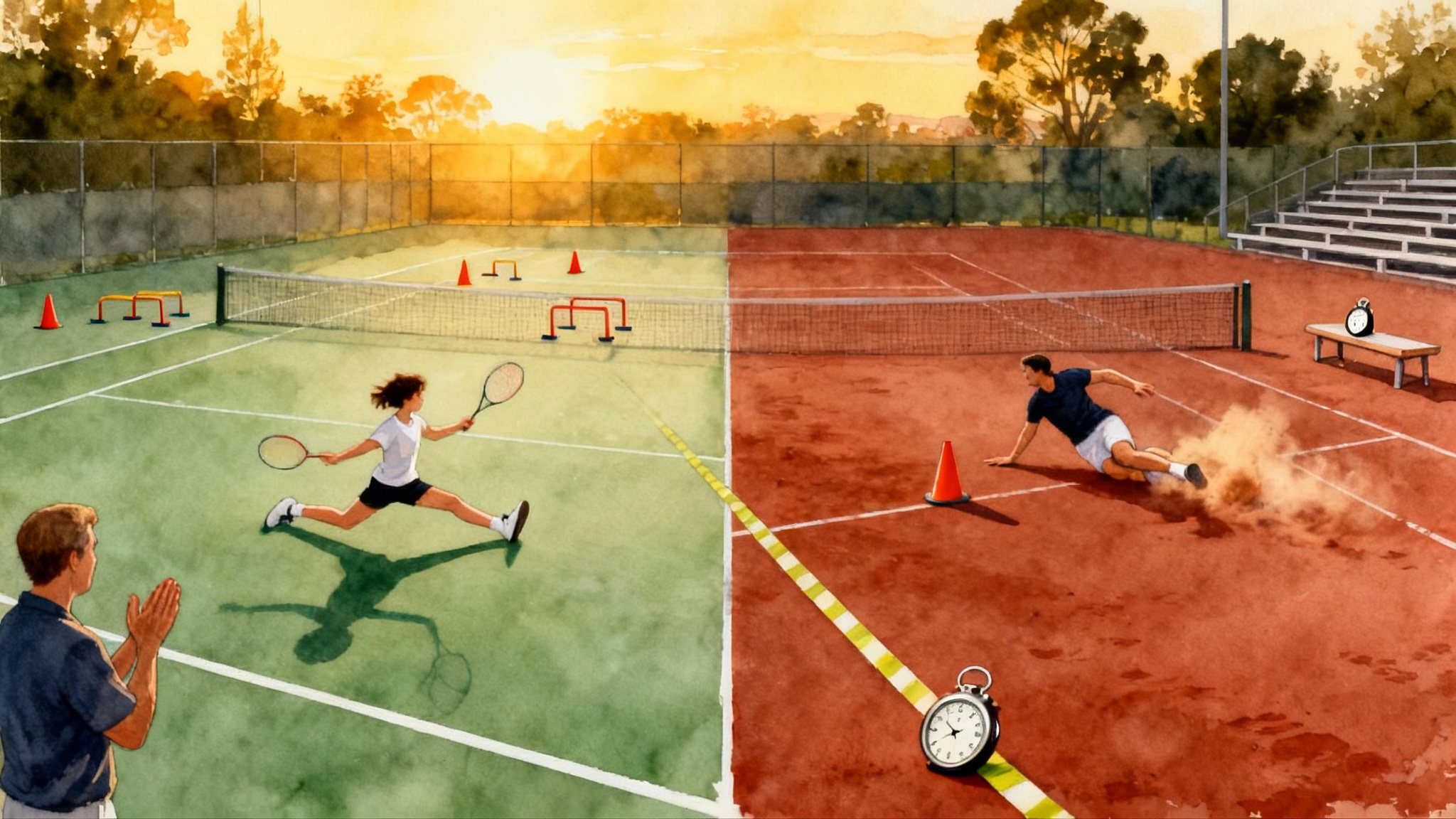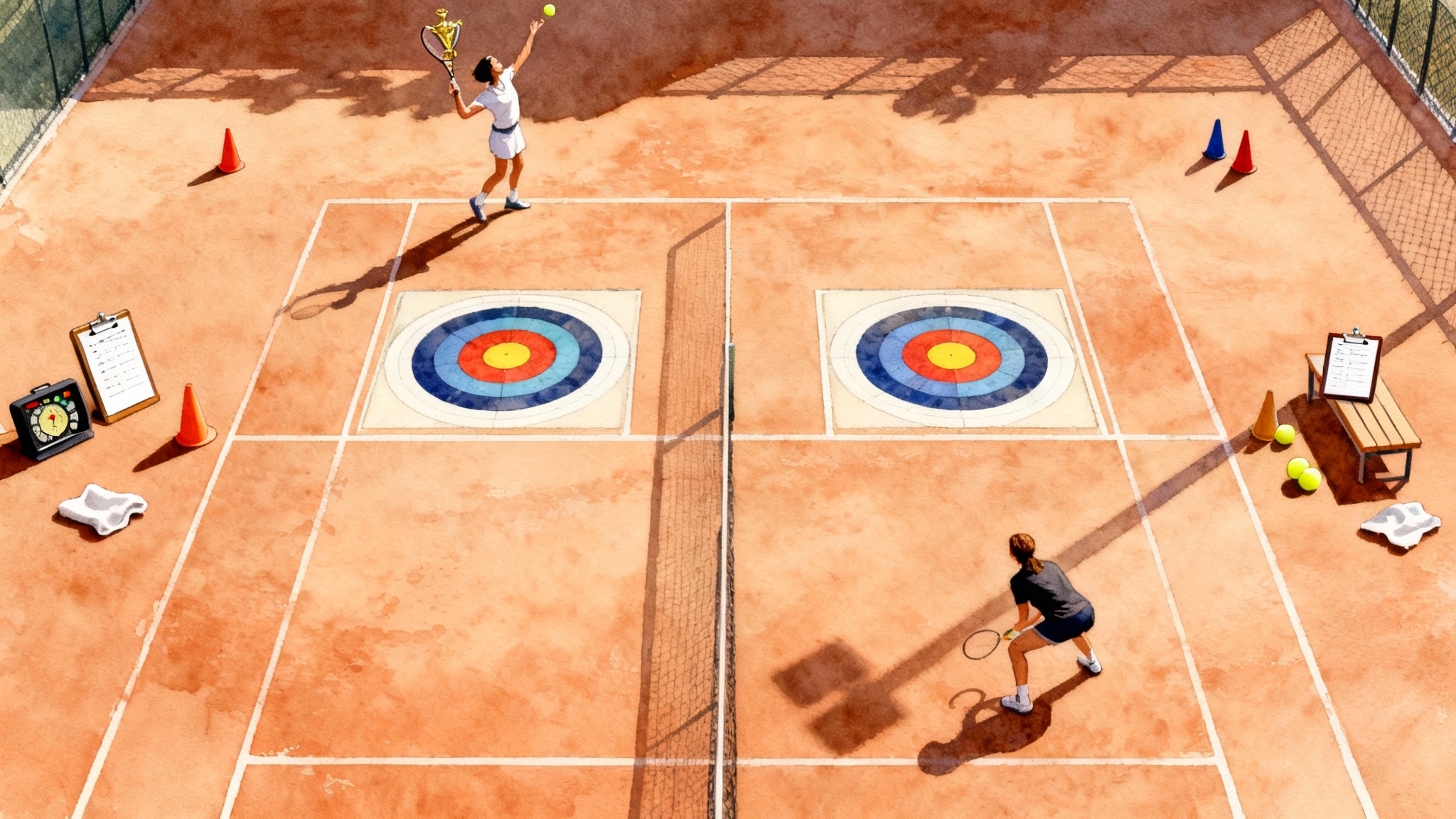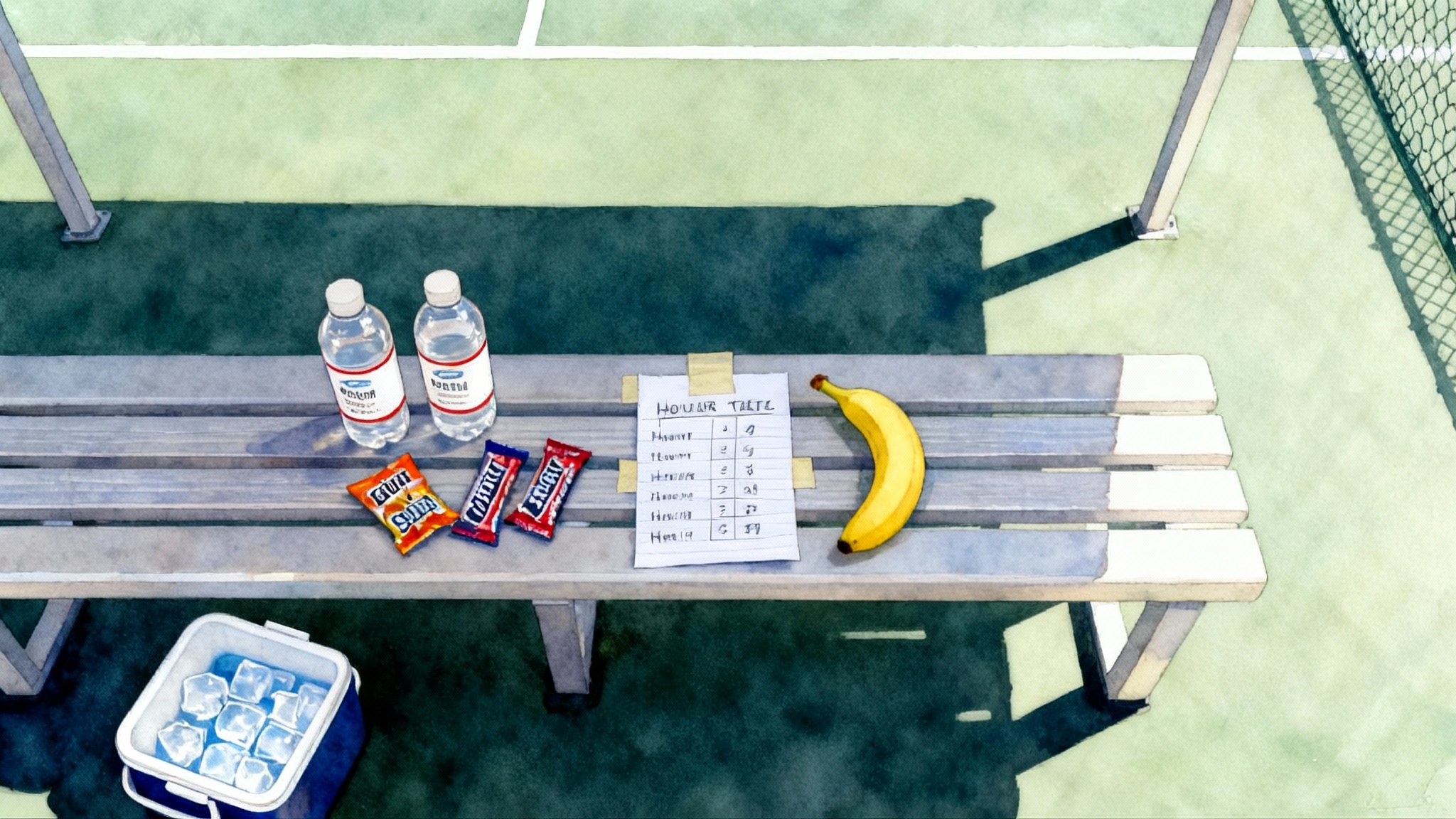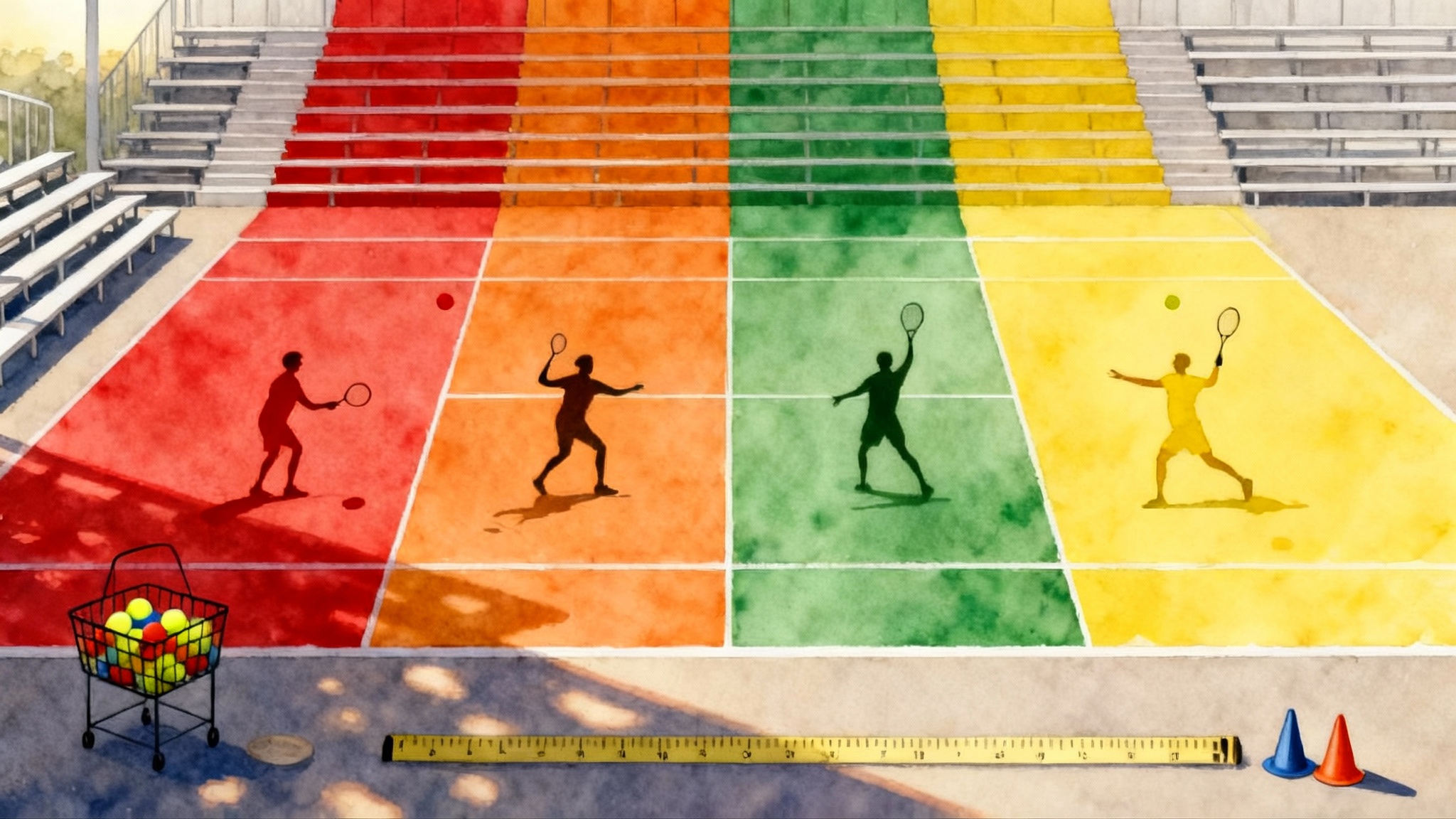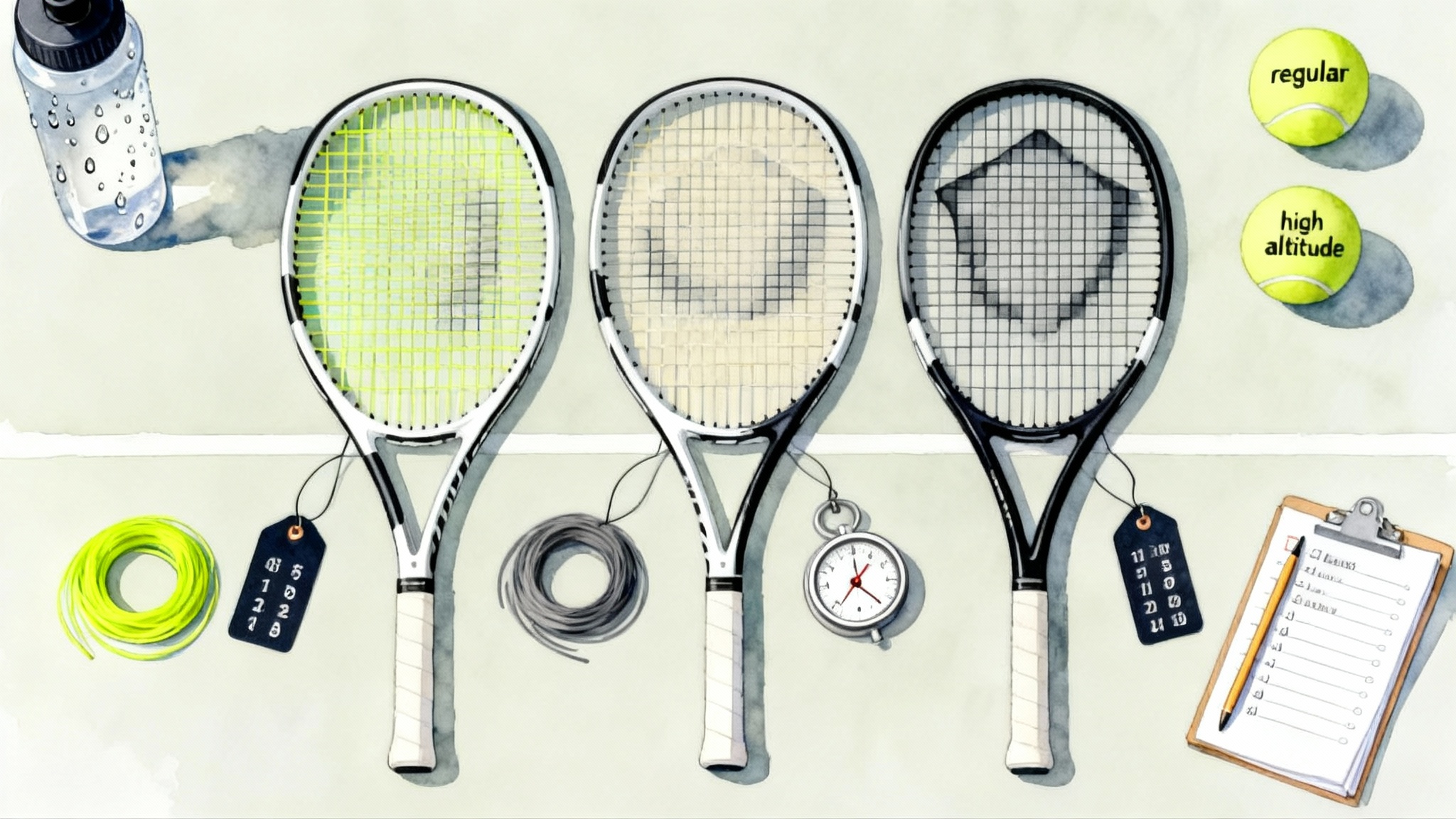Cycle‑Smart Tennis Training for Girls and College Recruits
An actionable, evidence-based guide that helps parents and coaches plan fitness loads, on-court intensity, and tournament calendars around the menstrual cycle. Includes phase checklists and GAC Academy templates.
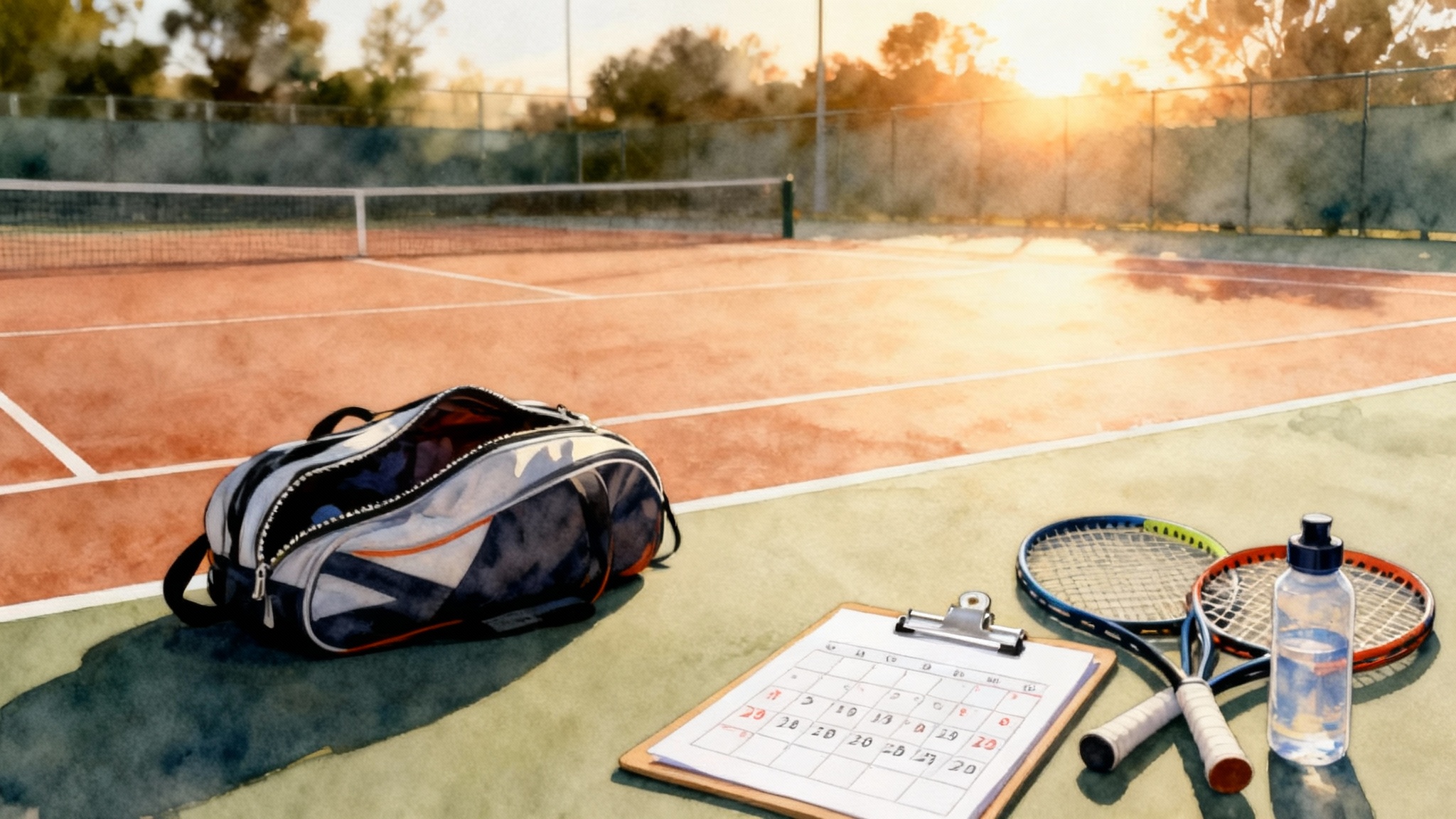
Why cycle-smart tennis matters
A player’s body does not show up the same way every day. For junior girls and college-bound athletes, the menstrual cycle can change energy, mood, sleep, body temperature, and pain. That variability can feel frustrating. It is also predictable enough to plan around. Treat the cycle like a built-in training calendar. With a few simple tools, you can adjust loads and practice goals so that the athlete peaks more often, manages symptoms, and builds confidence.
This guide gives parents and coaches a practical framework that blends physiology with real tennis practice. You will find phase-by-phase training goals, checklists, and two sample weeks adapted from the coaching playbook used at GAC High-Performance Tennis Academy in Norcross. Use them as templates, then tailor to the athlete’s individual pattern.
A simple tour of the menstrual cycle for coaches
The average cycle is about 28 days, but anywhere from 24 to 35 days can be normal. We will use four coach-friendly phases. The day count is approximate. Coaches should anchor plans to the athlete’s actual start dates and symptom patterns.
- Menstruation, early follicular, days 1 to 5: Bleeding begins. Energy and iron may be lower, cramps and headaches are common, body temperature is slightly lower than in the luteal phase.
- Mid to late follicular, days 6 to 12: Hormones rise steadily. Many athletes report better energy, focus, and power.
- Ovulatory window, days 13 to 15: A short peak in hormones. Some athletes feel fast and sharp, others feel edgy or headachy. Pay attention to how she historically responds.
- Luteal, days 16 to 28: Body temperature and resting heart rate trend higher, sleep may be lighter, and some athletes experience bloating, breast tenderness, and mood shifts. Heat feels tougher and hydration needs can climb.
Two principles keep this simple and safe:
- Individual first. Group averages do not predict individual response. Track her pattern for six to eight weeks and adjust.
- Symptoms drive decisions. The athlete’s ratings of effort and discomfort are more useful than the calendar alone.
Core tools you will use all season
- A symptom and training log: Date, phase estimate, pain 0 to 10, rate of perceived exertion 1 to 10, sleep hours, and notes. Rate of perceived exertion means how hard a session felt to the athlete, not to the coach.
- A green, yellow, red system:
- Green means go as planned.
- Yellow means reduce volume or replace high-impact pieces.
- Red means shorten the session, do light skills and mobility, and recover.
- A monthly overview: Mark likely phase windows and ring important tournaments, showcases, and college visits.
Phase-specific training goals and adjustments
Menstruation, days 1 to 5: Keep the plan flexible
Primary goals: Manage pain and fatigue, protect iron status, keep skills sharp with shorter, crisp work.
- On-court intensity: Use short blocks. For example, 6 to 8 rounds of 45 seconds tempo baseline rally at 70 percent, 60 seconds rest. Add serve accuracy ladders and touch volleys. Keep drills technical, not grindy.
- Fitness load: Choose low-impact power and mobility. Three sets of 6 to 8 medicine ball rotational throws, 3 sets of 6 jumps focusing on soft landings, 12 to 15 minutes of hip and thoracic mobility. Avoid high-volume plyometrics on heavy-bleed days.
- Heat and hydration: If cramping and nausea show up, plan shaded breaks. Cool towels help. Encourage consistent sipping rather than big gulps. For full event routines, see tournament-day fueling plans.
- Nutrition notes: Regular meals and snacks with iron-rich foods, vitamin C for absorption, and a simple carbohydrate source available courtside. If the athlete has heavy periods or fatigue out of proportion to training, discuss iron testing with a clinician.
- Yellow day swaps: Replace match-play sets with serve plus one patterns and return depth targets. End with a guided relaxation or breath practice.
Coach checklist for menstruation:
- Ask for a morning status: pain 0 to 10, energy 0 to 10, and whether cramps or headache are present.
- Confirm a clear plan B that trims volume by 30 to 40 percent.
- Layer in skill quality goals: feet still at contact, first step out of the split step, serve toss height within the athlete’s normal range.
Mid to late follicular, days 6 to 12: Build speed and strength
Primary goals: Load the system. This is often the best window for speed, heavier strength, and high-quality volume.
- On-court intensity: Progress to 2 to 3 match-play sets or pressure games that start at deuce or 30 all. Include 2 blocks of 8 minutes of high-tempo cross-court to down-the-line switches.
- Fitness load: Prioritize compound lifts and sprint mechanics. Two lower-body strength sessions per week can include 3 to 5 sets of 3 to 5 reps for squats or trap-bar deadlifts at challenging but crisp loads. Add resisted sprints of 10 to 20 meters and deceleration work.
- Skill focus: Serve speed and accuracy testing, forehand and backhand plus one patterns, and first-strike tennis.
- Monitoring: Expect lower perceived effort for a given pace. Use that window, but keep two reps in reserve on the heaviest lifts to protect tissue.
Coach checklist for mid to late follicular:
- Program at least one true speed day with full recovery between efforts.
- Add one strength session that feels heavy but looks technically perfect.
- Track serve velocity and accuracy to identify progress.
Ovulatory window, days 13 to 15: Sharpen without overfilling the bucket
Primary goals: Keep the nervous system snappy and decision making clear. Avoid cramming too much volume into a short window.
- On-court intensity: Contrast training works well. For example, alternate 4 balls of all-out attacking play with 4 balls of locked-in neutral rally. Play 2 short tiebreakers that start at 3 all.
- Fitness load: Use power circuits that emphasize quality over quantity. Three rounds of 5 hang cleans or kettlebell swings, 5 box jumps, 20 meters acceleration, 90 seconds rest.
- Movement care: Dynamic warmup plus landing mechanics review. Film two cutting movements and check knee alignment.
Coach checklist for ovulatory window:
- Keep total hard ball contacts slightly lower than the prior week.
- Include cognitive drills, such as pattern calls under time pressure.
- Confirm sleep quality is holding steady.
Luteal, days 16 to 28: Manage heat, bloat, and sleep
Primary goals: Sustain performance while protecting recovery. Body temperature and perceived effort can climb, which makes tournaments in heat more demanding.
- On-court intensity: Use interval match-play. Two sets to 4 games with a 6-minute break between sets to simulate heat rules. Coach hydration timing and cooling strategies during changeovers.
- Fitness load: Maintain strength with two total-body sessions. Keep one session heavy but short, and one session lighter and explosive. Aerobic top-ups can be 12 to 20 minutes at a conversational pace on non-court days.
- Recovery: Earlier lights-out, simple breath work before bed, and a protein-rich snack in the evening can help sleep.
- Bloat and discomfort: Clothing that does not restrict the abdomen, a slightly larger grip if fingers feel puffy, and extra wristbands can increase comfort.
Coach checklist for luteal:
- Shorten warmups in high heat and add more micro-breaks.
- Cue composure skills during tight scorelines: exhale to a count of 4, one clear tactical intention for the next point, reset.
- Plan the week’s hardest session no later than day 22 for athletes who feel heavy late in the luteal phase.
GAC High-Performance templates you can copy
The following sample weeks mirror how coaches at GAC High-Performance Tennis Academy in Norcross, Georgia organize training around common patterns. Use them as a starting point. Replace exact days with the athlete’s actual pattern and school schedule.
Template A: Tournament ends near day 5, build toward a showcase in the follicular window
- Monday, day 1 or 2: Light skill and feel. 60 to 75 minutes total. Serve accuracy ladders, doubles return routines, and 10 minutes of mobility. If cramps are severe, move to a 45-minute indoor technical session.
- Tuesday, day 2 or 3: Yellow-day match prep. 75 minutes. Pattern rehearsal and 2 short tiebreakers. Finish with 8 minutes of shadow swings for rhythm.
- Wednesday, day 4: Strength plus short court. 30 minutes of total-body strength with focus on posterior chain, then 45 minutes of short-court control games.
- Thursday, day 5: Transition to green. 90 minutes. Cross-court to down-the-line drills, serve plus one targets, and one set to 6 games.
- Friday, day 6: Speed day. Flying 10-meter sprints, deceleration work, and 2 sets to 4 games. End with serve speed test, 10 best attempts only.
- Saturday, day 7: Full match. One best of three sets match or two practice sets. Note rate of perceived exertion. If below 7 out of 10, progress the following week.
- Sunday, day 8: Recovery ride or easy jog 20 minutes, plus stretch. Planning session for the week ahead.
Template B: Two-week build to a big tournament that lands in mid luteal
Week 1
- Monday: Strength heavy day. 4 by 4 squats or trap-bar deadlifts, upper-body push and pull, and core carries. On-court 60 minutes, technical.
- Tuesday: Volume day. 2 blocks of 12 minutes tempo rally, 2 tiebreakers. Hydration rehearsed by timer.
- Wednesday: Off or mobility and feel. If school stress is high, choose a true rest day.
- Thursday: Speed and power. Resisted sprints, medicine ball throws, serve speed testing. On-court 75 minutes, patterns under time pressure.
- Friday: Match. Best of three sets or 3 sets to 4 games.
- Saturday: Active recovery. 30 minutes low-intensity conditioning and 20 minutes dedicated to returns.
- Sunday: Rest, planning, equipment check.
Week 2
- Monday: Maintain strength. 3 by 3 main lift, 3 by 5 jumps. On-court 75 minutes, light volume.
- Tuesday: Match-play intervals. Two sets to 4 games with planned cooling breaks.
- Wednesday: Skills and serves only. 60 minutes. Confirm tactical priorities and routines.
- Thursday: Travel or taper. 45 minutes of feel and footwork. No heavy lifts.
- Friday to Sunday: Tournament. Stick to hydration and cooling plan. Debrief after each match with three questions: what worked, what nearly worked, what to try next.
Tournament planning with the cycle in mind
You cannot control exactly when bleeding or symptoms will start during a busy schedule, but you can control preparation. Here is how GAC coaches advise families to plan.
- Know the athlete’s pattern. Six to eight weeks of tracking gives a decent forecast. Expect variance of a day or two.
- Protect one performance window each month. Aim to schedule showcases, UTR events, or visits when the athlete usually feels sharp, often in the mid to late follicular phase.
- Build a red-day contingency. Pack pain relief as advised by a clinician, iron-rich snacks, a dark towel or extra shorts, and a clear plan for shorter warmups.
- Rehearse in practice. Practice cooling breaks, changeover routines, and time-pressed decisions before the event.
- Debrief with data, not judgments. Use rate of perceived exertion, sleep, and pain scores to separate controllable factors from the rest.
Communication scripts that respect privacy
Parents and coaches often worry about how to talk about this without awkwardness. Keep it simple and athlete led.
- Coach to athlete at check-in: “How is energy today from 1 to 10, and is there any pain I should know about? We have the plan and we have the yellow-day plan if we need it.”
- Athlete to coach before a session: “I am at a 5 for energy and a 3 for cramps. Let us run the yellow-day version for the first half and reassess.”
- Parent to athlete the night before a tournament: “What is your hydration plan, and what helps you most on heavy days? I will have those items ready.”
Keep cycle logs private and share only what the athlete agrees to share. The goal is performance and well-being, not policing her body.
Red flags that need medical input
- Periods that routinely last more than 7 days, or cycles shorter than 24 days or longer than 35 days.
- Pain that stops normal activity or does not respond to typical over-the-counter strategies.
- Signs of low energy availability: persistent fatigue, frequent injuries, or stress fractures. In these cases, loop in a clinician who understands adolescent athletes.
The GAC cycle-smart practice menu
Use these plug-and-play blocks to build your own week. Each block lasts 12 to 20 minutes. String two or three together.
- Serve plus one precision: 10 first serves to wide, 10 to body, 10 to T. After each make, play out one ball with the planned plus one. Keep stats.
- Return depth game: Partner hits a first serve at 70 percent pace. Athlete must land the return past the service line with margin. First to 15 wins.
- Cross-court pressure ladder: 6 balls cross-court with a small cone target, then switch to down-the-line for 6 balls. Repeat 3 rounds.
- Pattern under fatigue: 4 ball sequence at 85 percent, then a 15-second sideline shuffle, then repeat for 6 rounds. Use only in green days.
- Heat rehearsal: Set a timer for changeovers. Practice bottle opening, towel and cooling routine, and quick tactical planning.
A one-page monthly planner you can recreate
Create a page with four rows.
- Row 1: Calendar days. Mark the expected start of bleeding and the likely windows for each phase.
- Row 2: Training priorities. For example, load strength and speed in the follicular phase, sharpen during the ovulatory window, and maintain in the luteal phase.
- Row 3: Events. List tournaments, showcases, and visits. Circle one event where you expect a green window.
- Row 4: Support actions. Refill pain relief supplies, schedule a check-in with a clinician if needed, replace worn grips, set early lights-out nights during heat waves.
Tape the page inside the racket bag. Update it each week.
Three checklists to keep sessions on track
Coach match-day checklist:
- Confirm hydration and cooling plan, including shaded rest spot.
- Ask for morning energy and pain ratings.
- Review one tactical theme and one emotional cue for pressure points.
- Set a 10-minute decompress window after the match before any debrief.
Parent support checklist:
- Pack backups: shorts, wristbands, socks, and a dark towel.
- Prepare easy snacks the athlete already tolerates well.
- Handle logistics so she can focus on routines: transport, shade, ice, entry confirmation.
Athlete self-checklist:
- Write down a pre-match plan on a note card: serve targets, return intentions, between-point breathing.
- Confirm period supplies in the bag and a spare set of clothes.
- Set a rating goal rather than an outcome goal, such as “compete at a 9 out of 10.”
How to customize for college-bound athletes
College recruiting adds travel, showcases, and stress. Cycle-smart planning helps athletes show their real level more consistently. For event timelines and outreach, review college tennis recruiting steps.
- Showcase timing: If possible, aim for a window where the athlete typically reports green days. If that is not possible, rehearse yellow-day match plans in the two weeks prior.
- Travel: Pack the monthly planner page. For long flights, prioritize aisle seats, walk breaks, and hydration. Time zone changes can shift sleep, so schedule a buffer day before the first hit.
- Communication with coaches: Share performance-focused information, such as the athlete’s training priorities and match routines. There is no need to disclose cycle details unless the athlete chooses to.
Putting it all together
Start with tracking. Add the green-yellow-red system. Use phase-based goals as a scaffold, not a cage. Borrow the GAC templates, then adapt them to school calendars and travel. Build the skill of adjustment in the athlete and in the adults around her. That is the real edge. Over a season, you will see better timing of heavy lifts and hardest drills, fewer sessions that feel like a grind, and a more confident competitor who knows how to show up on any day the sport asks.
Cycle-smart tennis is not about chasing perfect days. It is about building a reliable process that respects biology and serves performance. Make the plan, check the signals, and coach the player in front of you. That is how junior girls and college-bound athletes grow into resilient match players who can thrive in any round they reach.
